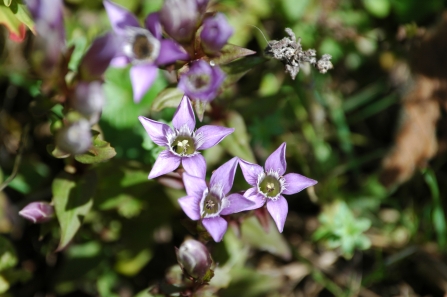
Wildlife to look for in August

Gentians
The purple haze of gentians in late summer adds a splash of colour to what can otherwise be a brown and parched landscape at this time of year.
Look for Chiltern gentians at nature reserves in the Chilterns including Dancersend, Homefield Wood and Warburg Nature Reserve. Autumn gentians can be found at Aston Clinton Ragpits, Bacombe Hill and Grangelands.
Find out how to tell the difference between Chiltern gentians and the more common autumn gentians with our infographic.
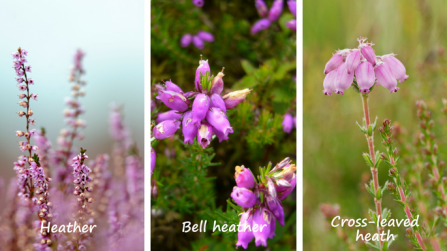
Heather
There are three species of heather to look out for: heather or ‘ling’, bell heather and cross-leaved heath.
- Heather is the classic heathland plant that turns heathland shades of purple and pink in August and September.
- Bell heather has vibrant purple bell-shaped flowers and grows on drier parts of heathland.
- Cross-leaved heath grows on wetter, boggier areas of heathland, where the soil is more acidic. The greyish-green leaves grow in groups of four, in a cross-shape, up the stem and the pale pink flowers form a cluster at the top of each stem.
Great heathland reserves to visit to see swathes of pinks and purples include Greenham Common, Snelsmore Common and Wildmoor Heath.

Adonis blue butterfly. Picture: Colin Williams
Blue butterflies
August is a good month to see many of our blue butterflies flying. Some, like the Adonis blue above, are only found in particular habitats, while others like the holly blue may be seen in your garden. Also look out for common blues and chalkhill blues.
Yoesden nature reserve in the Chilterns is a great place to look for blue butterflies.
There's still time to take part in the Big Butterfly Count. Simply record the species you see over 15 minutes before Sunday 8th August and add your counts to their website. Butterflies are important indicator species, showing how 'healthy' the environment is so all records are really useful for research.

Swallows on telegraph wires. CC
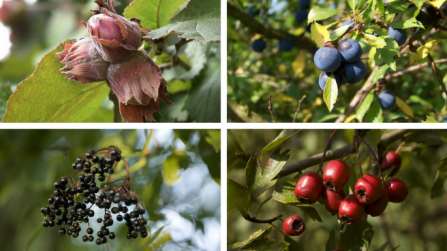
Nuts and berries
As summer progresses the hedgerows are laden with ripening nuts and berries. Look out for hazelnuts, elderberries, sloes, haws and rose hips.
If you do a spot of foraging, remember to leave plenty for the wildlife that relies on these to see them through the autumn and winter.
Why not plant a fruiting and flowering hedge instead of having a fence or wall in your garden? Hedges provide important shelter and protection for wildlife, particularly nesting birds and hibernating insects, as well as food through the year.

Devil's bit scabious by Amy Lewis
Devil's-bit scabious
The pincushion-like, lilac-blue flower heads of Devil's-bit scabious attract a wide variety of butterflies and bees. Look for this pretty plant in damp meadows and marshes, and on riverbanks.
Its common name arises from the fact that its roots look truncated, as if bitten off, legend has it, by the Devil.

Six-spot burnet moth by Guy Edwardes/2020VISION
Six-spot burnet moth
The six-spot burnet moth is a day-flying moth that flies with a slow, fluttering pattern. Look for it alighting on knapweeds and thistles in grassy places. It is glossy black, with six red spots on each forewing.
The red spots of burnet moths indicate to predators that they are poisonous: they release hydrogen cyanide when attacked. Don't confuse them with another black and red day-flying moth, the cinnabar.
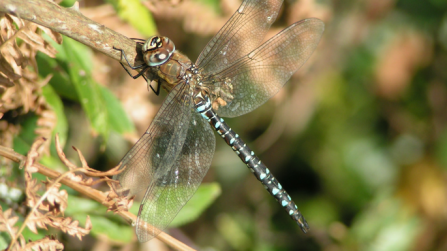
Migrant hawker dragonfly. Picture: Richard Burkmarr
Migrant hawker
The migrant hawker is a medium-sized dragonfly that may be seen feeding in large groups. It flies late into autumn and can be seen in gardens, grasslands and woodlands.
During the late summer, large numbers of migrant hawkers arrive from the continent boosting the resident population so keep an eye out for these this month.
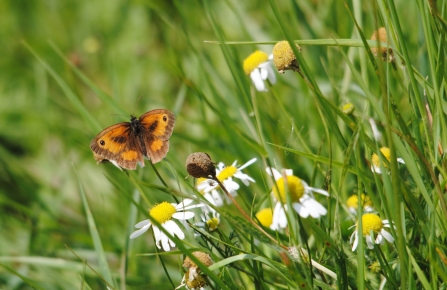
Gatekeeper butterfly on oxeye daisies by Amy Lewis
Gatekeeper
The gatekeeper butterfly is on the wing in summer. Look out for the large, distinctive eyespot with two 'pupils' on each forewing.
It is a butterfly of grassland, hedgerows and woodland edges and can be seen feeding on wild marjoram, bramble and ragworts.
It's similar to the meadow brown butterfly so look closely. The combination of bright orange wing patches, one large eyespot on the forewing and one smaller eyespot on the hindwing, is unique to the gatekeeper.
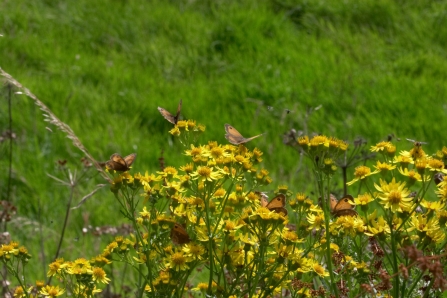
Ragwort
Common ragwort is one of the most frequently visited flowers by butterflies in the UK and more than 200 species of invertebrate have been recorded on it. Look out for the yellow and black striped caterpillars of the cinnabar moth caterpillar eating its leaves.
Renowned as a weed of paddocks and pastures, where it can be harmful to livestock, it is not usually such an issue in gardens or on waste ground. Common ragwort is a biennial, flowering in its second year from June to November.
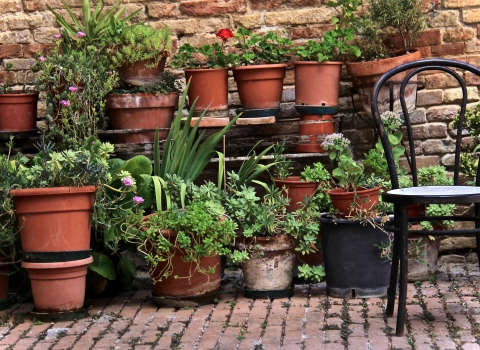
Wildlife gardening
Do more for local wildlife by turning your garden into a wildlife haven. Get lots of ideas and tips from our expert Ben in his series of short videos.
Stay up-to-date with our work
Sign up below to receive the latest news from BBOWT, tips about how you can help wildlife, plus information on how you can get involved.

